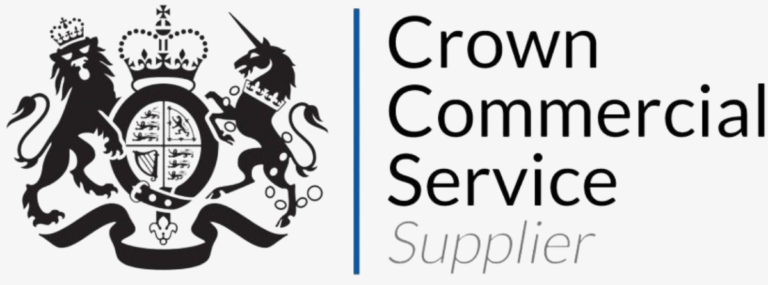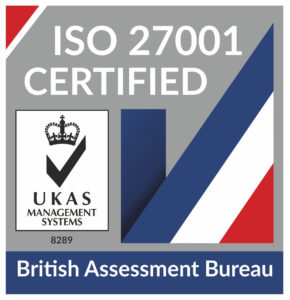
HaloCRM Guides
The Service Catalogue
In this guide we will cover:
- Service Catalogue
- Service Access
- Service Details
- Field List
- Monitored Services (Service Status Monitoring)
- Maintaining your Service Catalogue
- Favourite Services
- Send Bulk communications to all subscribers of a service
Admin Guides:
Service Catalogue
The Service Catalogue is a means of providing your end-users with a pre-defined list of more commonly raised services. Services can be grouped by category to keep things tidy and can have access restrictions set as to ensure right users have access to the relevant options.
You can access the service catalogue by clicking on the menu option and a full list of services that are available for you will be shown:
Fig 1. The Service Catalogue on the Self-Service Portal
This screen can be customised to show like below instead of requiring a category to be chosen first. In Configuration > Service Catalogue, disable "Service Category must be selected before selecting a Service on the end user portal", then enable "Show the "All Service Catalogue" option on the Service Catalogue list on the portal".
Fig 2. Alternate view.
As of v2.206.1+, you can then additionally enable "Disable automatic loading of all Service Catalogue upon accessing the Service Catalogue on the end user portal" to not show every category immediately upon opening. If a User chooses a category and then switches back to "All", it will show all then.
Fig 3. Hidden all services option.
At the heart of the Service Catalogue are a collection of ticket types/templates, as requesting a service is simply a case of raising a ticket of a given type/template.
You can customise your Service Catalogue by heading to the Service Catalogue module within the agent application:
Fig 4. The Service Catalogue within the agent application
Let's go ahead and create a new Service Category - Hardware - and associated Service 'Desktop Request'.
The first thing we will do is create our Service Category, which can be achieved via hovering over the list on the left hand side & right clicking over this list:
Fig 5. Creating a new Service Category, this is achieved by right clicking on the list of categories (view is set to "Service Catalogue By Category")
We are then presented with a window where we can input a Service Category name, summary, description and set User access restrictions.
The 'summary' is the summary text that will appear under the category name in the portal before the category is selected. The 'description' will appear under the category name after this category is selected.
Service Access
User access restrictions for the category can be set under the 'User Access' tab when editing the category. User access can also be restricted per service under the 'User Access' tab within the service setup.
Fig 6. Service Category user access options
The 'User Access' defines the entity that can access Services within this Category (site, client, organisation etc..). You may well find that you are looking to provide client-specific services - if so, you would want to create a client-specific service category and restrict access here to the client in question.
The Service Access Level, similar to the Web Access Level, is an option found on the Permissions tab for a user and defines the level of access they have to the Service Catalogue. A user has access to services up to & including the Service Access Level they are given, if inherited from a role and then overridden for the user whichever permission is higher (role or manual override) will take precedence. Options are 1-3, where 2 is the default set for new users & 3 is the highest level of access a user can have.
Fig 7. Service Access Level for a user
Now we have created our Service Category and set the relevant access restrictions, lets go ahead and create a service to request!
Upon creating a new Service (via the usual method of clicking 'New' in the top right) you're first prompted to specify your Service details, including name, category & summary:
Fig 8. Service Details tab
The next tab along - Configuration - is where we specify the core information around requesting this service. The first section of this tab is your basic settings:
Fig 9. Basic Service Request configuration options
For our example, we are concerned with the section option in Fig 9 as this determines whether or not this service will be visible in the Service Catalogue.
For more information on setting up user's access to services check out our guide Restricting User Access to Services.
Assigning multiple categories to a single service
You can enable the ability to assign multiple service categories to a single service catalogue item. Having a service belong to multiple categories is useful for cross-functional services as it can improve portal navigation for users by increasing the visibility of the service. It is also beneficial when reporting on services as it allows you to categorise services more accurately, account for services that fall under multiple categories.
To enable this functionality head to Configuration > Service Catalogue > enable "Allow a Service to belong to multiple Service categories".
Fig 10. Allow a Service to belong to multiple Service categories
When enabled when configuring a new service, you will need to choose a 'Primary Service category' the service falls under as well as the other categories the service falls under. The fields used are highlighted in figure 9.
Fig 11. Assigning multiple categories to a service catalogue item
The service will appear under all selected categories in the self-service portal, providing more ways for users to navigate to the service. The primary service category of the service is used for reporting purposes.
Restrictions for users accessing the service will be inherited from all the service categories the service belongs to. For more information on user access to services when using multiple categories check out Restricting User Access to Services.
Service Details
Beneath these options is our Service Request Details Table:
Fig 12. Service Request Details options
You'll see in Fig 12 that we have an option to set a ticket type or ticket template to be raised upon requesting this service. There is also the option to have the button go to a URL, so when clicked you will betaken to the specified URL.
Field List
As I want to provide a form specific to requesting a desktop (Found in the HaloPSA Trial instances) that would include fields such as desktop type, peripherals and associated software, I have created a new 'Desktop Request' ticket type and associated field list:
Fig 13. Desktop Request field list
After creating this new ticket type, I have specified that this is the ticket type to raise when the 'Desktop Request' service is requested (Fig 12). As I want the end-user to input details relevant to this request (via the form outlined in Fig 13), I have also enabled the 'Show new ticket screen when requesting this service' option.
You'll also find a 'User Access' tab on a service, where you can override the access permissions set for the Service Category.
Great - so we have now created a new 'Hardware' Service category with no access restrictions (Fig 14) and an associated 'Desktop Request' service that sits under this category (Fig 15), and raises a 'Desktop Request' ticket type upon this service being requested (Fig 15).
Fig 14. Our Service Catalogue, including our new Hardware category
Fig 15. Desktop Request form
Monitored Services
We have a dedicated guide on monitored services here. But see below for a brief overview.
Services in HaloPSA can also be configured as 'monitored' services, which will allow for their status to be tracked. This can be a useful way to allow end-users to check in on any planned maintenance or faults regarding a given service you manage. Service Status Monitoring is a full monitoring service within Halo, and allows tracking of full history from your chosen monitoring software.
This works by receiving e-mails from your third party systems, processing those emails to update the Halo service status database, whatever the status of the notification, and track the history of the status of this service.
New requests can be raised when a service fails, where you can track the actions taken to restore the service to operational status. Halo can even generate a ticket if a Service Status email is not received.
The Breakdown of How Halo Processes Service Updates:
- Generic Email Rule - An email rule with type 'Service Status' is matched, so the email can attempt to be matched to a monitored service.
- Match on a Service: Within the Monitoring Configuration tab of the service, you can set the email rule for this service, i.e. match on the Azure service when the body contains the string "Azure". Now at this point Halo has matched to a service.
- Filtering on Statuses: From here the email should contain the a sting to indicate the status is "OK" or "Fault" when matched on the status of the service in Halo is updated.
The definition of a service is quite broad. Examples of Monitored Services:
- A nightly batch job, such as a backup, virus scans, or disc space check.
- A frequently recurring check, such as a check of the status of a network link, or a check that a URL is operational.
- A manual task such as changing of the backup tapes in a server or periodically reviewing the list of valid users.
- Monitoring for warning messages from a third party utility or monitoring system and tracking that actions are taken to respond to the warning.
- Any task or job that you wish to report the success or failure of, and which may form part of your SLA.
Note: You must be on NHServer v13.21 + or the incoming/outgoing services to use service status monitoring via emails. All hosted customers will be on incoming/outgoing services from v2.184 of Halo.
Maintaining your Service Catalogue
Editing and creating services for your end users is simple.
- Click on an existing service or press new in the top right.
- If editing an existing service, click edit in the top left
- Name and assign the category to the service
- Assign a cost and delivery time if necessary, add a description and summarise the service
- Head to the configuration page
- Adjust the settings as necessary
- Of importance is how the ticket is logged to reference the service request
- You can pick a ticket type to log the service request as or, (if ticket type defaults don't provide enough flexibility) then you can pick a ticket template to use (which includes a ticket type setting)*
- Fill in the remaining tabs including User Access and add any subscribers from here. As of v2.208.1+, conditions for Subscribers can be both individual or grouped. If grouped, every condition in the group must be met.
- Add any related services and assets
- Click Save
Note: Only templates with an ITIL type of 'Service Request' will be selectable in the Service Request Details section, and only ITIL types of 'Incident' will be selectable in the Incident Details section.
A bell icon can be shown to set whether a user is subscribed to a service. To enable this, go to Configuration > Service Catalogue, and enable "Show an icon to indicate whether a User is subscribed or not in the end user portal".
- No bell will show if a service cannot be subscribed to.
- A grey crossed-out bell will show if the user is not subscribed.
- A golden belle will show if the user is subscribed.
Fig 16. Subscribed services icons.
When logging a Service Request with a Ticket Type that includes the cost field, it will default the value of the Cost field to the service cost. Quantity can also be added to the Ticket Type fields to request more than one of the same service at once.
Checking who has Access
Fig 17. View as User button
You can check which users can see what by clicking View as user and selecting the relevant user. This enables you to see which services are available to groups of users. Customising the catalogue by client, site or user.
For more information on creating new and configuring services see our advanced services guide here.
Favourite Services
Users can have their most logged services within another panel within the Service Catalogue. By default, this will show the top 10 most logged services for that user.
To enable this, go to Configuration > Service Catalogue.
Fig 18. Enable Favourite service catalogue.
Fig 19. Favourite Services section.
As of v2.198.1+, an dropdown is available to set whether each service can appear within this area.
- Always show in Favourite Service Catalogue - Will always show if 10 services or less have this selected. If more than 10 services are set to always show, a limit of 10 will be shown by order of how often these are logged by that user.
- When applicable - Will show if in the most logged services.
- Do not show in Favourite Service Catalogue - Will never show regardless of how many times they have been logged.
This can be useful to encourage or discourage easy logging of certain services.
Fig 20. Hiding/adding a service.
Send Bulk communications to all subscribers of a service (v2.212+)
Distribution lists (also known as segments) in Halo are used to send communications out to a list of users. This can be utilised when you need to send out a communication regarding changes to or issues with a service.
From v2.212+ users can be automatically added to a distribution list when they subscribe to a selected service, allowing the list of users the communication is sent to to change dynamically.
To do this create a new dynamic distribution list in which the criteria for being added to the list includes 'Subscribed Users (Service Catalogue)'.
Fig 20. New dynamic distribution list.
Fig 21. Criteria for list membership based on being subscribed to a service.
In the figure 21 example, all users who are subscribed to the service 'Hardware Collection' will be added to the distribution list
Monitored services can have communications sent out to the subscribers of the service without needing to create a distribution list. For information on this checkout Service Status Monitoring.
Popular Guides
- Asset Import - CSV/XLS/Spreadsheet Method
- Call Management
- Creating a New Application for API Connections
- Creating Agents and Editing Agent Details
- Departments and Teams
- Halo Integrator
- Importing Data
- Multiple New Portals with different branding for one customer [Hosted]
- NHServer Deprecation User Guide
- Organisation Basics
- Organising Teams of Agents
- Step-by-Step Configuration Walk Through



